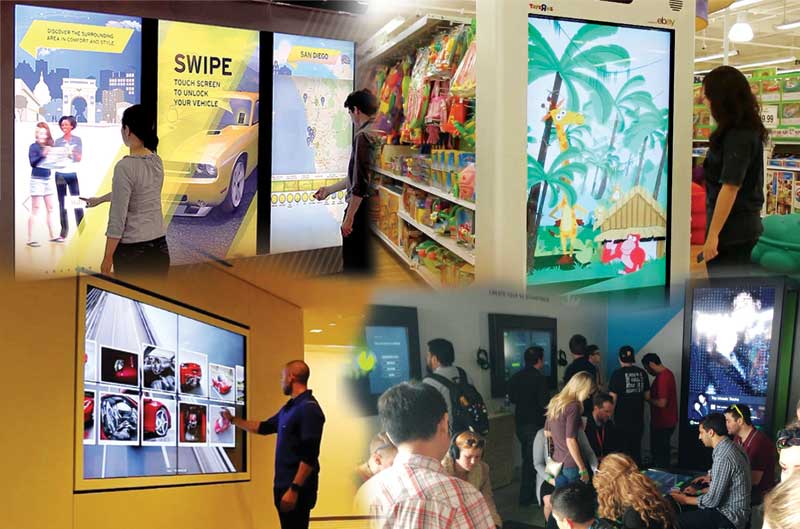
Photos courtesy Horizon Displays
By Josh Tonasket
Interactive video walls can be an effective tool for creating engaging brand experiences for a specific audience. They can also entail high costs. With this in mind, it is important first to understand the ins and outs of the technology and then to develop a strategy for deployment that will ensure the customer enjoys a healthy return on investment (ROI).
Interactive or passive?
Video walls have become a must-have item for companies that want to make a dynamic and larger-than-life impression. One of the first decisions to make is whether or not the wall will be touch-enabled. This of course will depend on the content the wall is planned to showcase.
A well-configured non-interactive video wall can still make an impressive impact with a loop of passive content, but converting an audience from spectators to participants through interactivity can greatly increase the effectiveness of the technology through deeper brand engagement.
The video wall customer will need to define the business objective for his/her investment. It may be simply to make a ‘punchy’ and charismatic statement or it may be to build further allure through a dialogue with passersby.
For companies that are still getting their feet wet in the digital signage space, video walls may not be the way to go at all—but in the right circumstances, there is no doubt they can be an impressive tool, with no comparable competition for users’ attention.
Touch technology
Today, if a liquid crystal display (LCD) is placed within reach of passersby, whether or not it is a touch screen, people will touch it. This is because they have come to expect touch to be part of the screen experience. Indeed, there is an increasing demand for touch-based interaction.

Video walls remain an impressive tool with no comparable competition for capturing people’s attention.
There are several ways to deliver the touch-screen experience. The choice will depend both on (a) environmental factors that can affect interactivity and (b) technology-specific features that give one option an edge over another. Specifying the right technology for a given job may be daunting without the help of a supplier or integrator with a proven track record.
Touch points can be a major consideration. If the experience requires mouse-like control, dual-touch functionality may suffice. For experiences based on multi-touch actions, however, a minimum of six points is recommended to support full hands. And if the video wall will be used by several people simultaneously, then it will need 12 to 32 points of touch.
Typically, the most well-rounded option is an infrared-based (IR-based) touch screen, which can support anywhere from two to 32 points for single or multiple users. This technology can be used with a gloved hand or stylus, is very accurate and resists any interference by high levels of ambient light.





